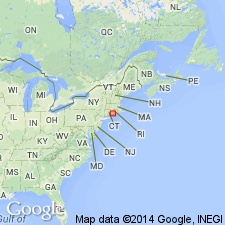
- Usage in publication:
-
- Boulder Lake Gneiss
- Modifications:
-
- Named
- Dominant lithology:
-
- Gneiss
- AAPG geologic province:
-
- New England province
Summary:
Boulder Lake Gneiss is defined here to include granodioritic gneisses south of the Killingworth Complex. Forms a wavy east-west-trending body 2 to 3 km wide and at least 18 km long. May be as much as 36 km long as mapped by Rogers (1985). Name was introduced by Lundgren and Thurrel (1973) as Boulder Lake facies of Monson Gneiss. Consists of medium-gray-weathering plagioclase gneiss with abundant amphibolite and common calc-silicate xenoliths. Chemical analysis reveals that gneiss is granodioritic to tonalitic. Authors conclude rock is an orthogneiss and not petrologically related to gneisses of the Avalon terrane. Unit is surrounded by ductile faults and is geographically enclosed within the Ordovician Killingworth dome rocks of the Bronson Hill terrane. Though previously mapped as part of the Waterford Complex, its isolation and distinct chemical composition argue against its inclusion in the Waterford. Probably intrudes the Killingworth Complex and therefore is younger than Middle Ordovician.
Source: GNU records (USGS DDS-6; Reston GNULEX).
For more information, please contact Nancy Stamm, Geologic Names Committee Secretary.
Asterisk (*) indicates published by U.S. Geological Survey authors.
"No current usage" (†) implies that a name has been abandoned or has fallen into disuse. Former usage and, if known, replacement name given in parentheses ( ).
Slash (/) indicates name conflicts with nomenclatural guidelines (CSN, 1933; ACSN, 1961, 1970; NACSN, 1983, 2005, 2021). May be explained within brackets ([ ]).

